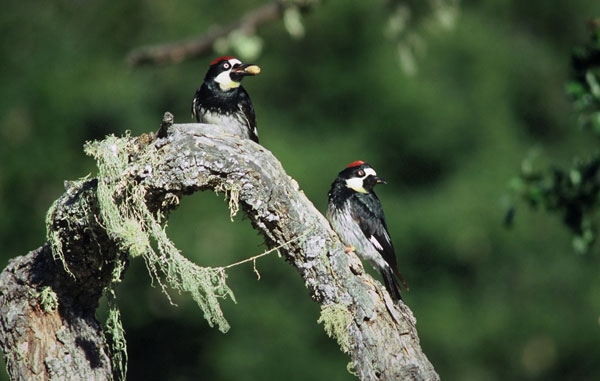Oak preservation education comes to the foothills
Oaks (Quercus ssp.) are one of the signature trees of California landscapes and are among the most favored by wildlife, according to the UC publication Wildlife among the Oaks.
In addition, several studies have found that open space and residential properties containing oak trees have higher property values than those areas without oak trees. Ecosystem services provided by oak forests and savannahs include recreational opportunities, shade and shelter, increased property values, aesthetic values, erosion control, air and water filtration, and food and fuel.
However, the threats to oaks are many:
- Construction removes entire trees or damages the root zone resulting in oak tree death
- Subdivision of property and fragmentation in land use reduces open space for oak savannah and forest, threatening seedling recruitment in some oak species
- Inappropriate landscaping practices, designed to support exotic landscape species, threaten oak health
To ease the impacts of these threats, UC Cooperative Extension Central Sierra will bring oak education to five counties in the Sierra Nevada foothills – Amador, Calaveras, El Dorado, Mariposa, and Tuolumne. Public meetings and multiple-session training seminars will help educate land owners, policy makers and Master Gardeners in ways to protect, enhance and regenerate natural oak woodlands. Training will also provide information that Master Gardeners can disseminate to their clientele to help home owners protect landscape oaks.
The program is funded with a grant from Renewable Resources Extension Act (RREA), a USDA-administered program that serves to sustain the nation's forest and rangeland resources for future generations. According to the USDA National Institute of Food and Agriculture website, “RREA serves a broad array of forest and rangeland stakeholders, including landowners and managers, natural resource professionals, forest products industry, range-based cattle industry, and non-consumptive.” Recognizing that, as the website notes, “the sustainability of the nation's forest and rangeland resources is largely dependent on the actions of millions of private forest owners, farmers, ranchers, and land managers,” this series of educational workshops will focus on providing information to a broad audience.
In Tuolumne County on May 13, the Biological Resources Review Guide Ad Hoc Committee of the Board of Supervisors will meet to discuss various county policy options regarding oak mitigation. Richard Standiford, UCCE specialist in the Department of Environmental Science, Policy and Management at UC Berkeley, will address the committee, presenting his research related to oaks and property values. He will also provide information regarding mitigation policies.
On May 9, the Calaveras County Master Gardeners will receive the first session of an oak ecology, identification and landscaping practices workshop. They will identify oaks in the field, inspect trees damaged by construction and look for evidence of insect and other wildlife interactions. This will be followed by an interactive discussion exercise about how (or why not) to landscape around oaks. Standiford will visit the foothills at a later date to present oak ecology information to Master Gardeners.


